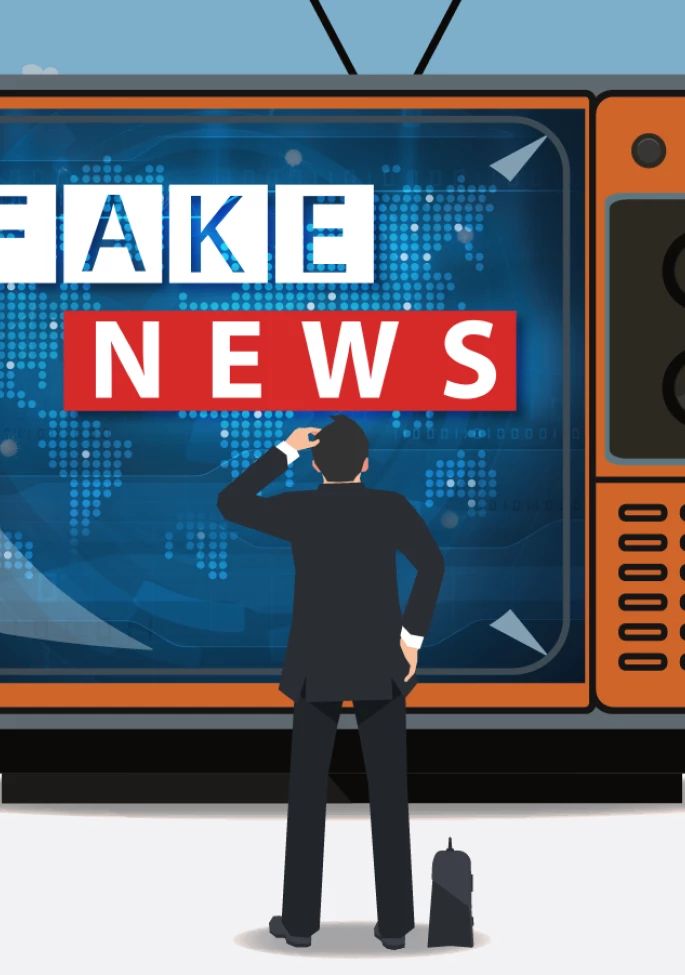Recent developments in artificial intelligence (AI) have taken the world by storm, with many industry leaders and technology optimists eagerly anticipating its integration into processes and solutions across nearly every aspect of our lives and professions. Others show a more skeptical approach, offering critiques, thought pieces, and calls to action to prevent AI’s potential misuse. And while the metaphorical jury is still out on AI’s precise place in humanity’s future, new laws, case filings, and rulings make it crystal clear: AI-related litigation is already upon us.
Modern AI Cases Are Here
Unsurprisingly, AI’s foray into human resources has spawned claims of algorithmic bias discrimination—an early sign of things to come. In one recent case, involving allegations that the defendant company’s job-applicant screening tool allowed its customer-employers to make discriminatory judgments in their hiring practices, the United States District Court for the Northern District of California held in part that “third-party vendors who furnish AI-screening tools to employers may be held liable as ‘agents’ of those employers.” It is also noteworthy that the U.S. Equal Employment Opportunity Commission currently maintains that employers, too, can face liability for using software tools found to discriminate, “even if the tool is designed or administered by another entity.”1
Some state legislatures also have begun drafting or adopting measures to protect citizens against employers who may use AI to make employment decisions. This past August, Illinois formalized an amendment to its Human Rights Act to regulate employers’ use of artificial intelligence “that has the effect of subjecting employees to discrimination on the basis of protected classes … or to use zip codes as a proxy for protected classes”—in an effort to head off AI-facilitated discrimination.2
In the legal arena, we have heard much discussion regarding the admissibility of AI-generated evidence, jurors’ trust in said evidence, and its current and future uses in attorney preparations and courtroom proceedings. However, less focus has been placed on what AI used in business settings will do to the fact patterns and evidence in corporate litigation. With AI–employment lawsuits like these already sprouting up, one might do well to imagine lawsuits in the not-so-distant future concerning product liability, antitrust, and intellectual property, to name a few, that implicate businesses’ use of AI—an immensely powerful but largely obscure technology—in their fateful actions.
When Could AI’s Use in Business Lead to Litigation?
Authors and other creatives are already up in arms about the dubious way AI systems have been “trained”—the process of feeding vast amounts of data to the algorithm, analyzing the results, and iterating accordingly—on mountains of their copyrighted work.3 And although it is impossible to predict every permutation AI will take as it further integrates with businesses, be it expanded or limited for specific needs, a slew of plaintiff claims could be just around the corner, including:
- AI logistics software calculates an unsafe trucking route, schedule, or load size, resulting in a tragic accident.
- AI diagnostics software fails to recommend a test that would have caught a patient’s fatal condition.
- AI sets anti-competitive pricing, develops a defective design, infringes a patent, or violates consumer data privacy. (We asked ChatGPT to supplement our brainstorming, and it kindly offered these last few ideas.)
As consultants who track trends in juror attitudes and overall decision-making, we have a keen interest in determining how AI’s inclusion in these classic litigation genres will interact with jurors’ views, biases, and, ultimately, verdicts. The first step to answering this question will be to carefully analyze the attitudes and experiences they develop concerning AI. In the coming years, we will see fewer jurors who have never used it and more whose lives have been changed or utterly transformed by it—for better or for worse.
How Does the Current Jury Pool Feel About AI?
Public views about AI and its implications have garnered much inquiry in recent years, with the Pew Research Center diligently tracking relevant attitudes since 2021.4 To get a pulse on where jurors stand now, arguably at the dawn of the AI revolution, IMS Legal Strategies also surveyed a national sample of 210 jury-eligible citizens from late 2023 to early 2024 to gauge their experiences and attitudes toward artificial intelligence.
Echoing the findings of Pew’s 2023 poll, our sample of jury-eligible individuals exhibited a solid baseline of familiarity with AI. Pew reported that 90 percent of its respondents have heard of AI; our own research indicated that 74 percent of jury-eligible respondents are somewhat (56 percent) or very (28 percent) familiar with AI and its applications. The introduction of chatbot services such as ChatGPT has undoubtedly driven much of that familiarity. Although both surveys revealed that most people have heard of ChatGPT (58 percent of the Pew sample and 68 percent of our sample), our research found that a considerably smaller percentage of people (38 percent) have actually used it or similar chatbot services. Granted, these numbers will likely rise, and associated attitudes will evolve, as media attention, industry adoption, and the surfacing of AI in jurors’ own workplaces continue to increase awareness and access.
At the same time, apprehension about the growing use of artificial intelligence in our daily lives has seen a surge. In Pew’s 2023 poll, 52 percent of respondents expressed being “more concerned than excited” about AI, compared to 37 percent in 2021 and 38 percent in 2022. Our own poll landed at 41 percent on that measure—though, perhaps more notably, both our poll and Pew’s 2023 poll found that a mere 10 percent of respondents were “more excited than concerned” (the remainder reported both emotions in equal parts).
Where is this unease coming from? A portion surely stems from various reports highlighting AI’s current shortcomings, such as its willingness to present falsities as fact—generously dubbed “hallucinations”—or its potential for discrimination.5 Further anxiety emerges from fears that it might kill jobs or otherwise encroach on employees in the workplace. Indeed, coinciding with the developments in employment litigation, Pew found that individuals already have strong opposition to AI being involved in hiring practices, such as reviewing job applications (41 percent oppose, 28 percent favor, 30 percent unsure), and an even larger proportion of individuals oppose AI making final hiring decisions (71 percent oppose, 7 percent favor, 22 percent unsure). Though there were some areas where opposition to AI was less pronounced—including monitoring workers’ driving behavior, analyzing how retail workers interact with customers, or evaluating how well people are doing in their jobs—a negative sentiment prevails, particularly when it comes to employers’ ability to surveil employees. How corporations elect to use AI moving forward will greatly impact this outlook by shaping employees’ individual experiences and resulting attitudes.
What Does AI Mean for Defendant Corporations?
Unknowns abound as businesses consider incorporating these new technologies into their day-to-day practices. Given we are still in the nascent stages of modern-AI’s rollout, a daunting variety of questions awaits companies that face litigation in the future. For example:
- What role will experts play in educating the jury on the inner workings of artificial intelligence? In arguing the reasonableness of AI’s decision-making and its role in causation or a defendant’s negligence? How much credence will jurors lend to these types of experts? Their ability to simplify the processes and capabilities of artificial intelligence to the layperson juror may prove paramount to the defense’s position. Of course, if AI developers themselves often cannot fully account for how the systems work, how can experts?6
- If a human has been removed from the equation, who will jurors believe is most responsible when an AI “fails?” Will every AI-led decision, no matter how small, require a human to sign off and shoulder responsibility for it? Who will jurors perceive as the chief “decision-maker” when it comes to liability? The company as a whole? The executive or technologist who instated the technology? The tech who oversees it (if any)? Jury psychology suggests that blaming an AI alone would not be a cognitively satisfying outcome—AI cannot be punished or face justice. Yet, in a future where the involved AI might have its own “thought” processes, rationales, and ability to respond to questioning, what if that AI is the most conversant party about key case issues and decisions?
- Might the original developer of the AI system in question, or at least the party who “trained” it, serve as a convincing “empty chair” to help mitigate a defendant’s perceived fault? What contracts will we see formed between the AI developer and business customer to address potential liability?
- Will the prevalence of powerful AI tools exacerbate juror hindsight bias issues regarding what companies could or should have done or known? To what extent will attorneys and experts, more than ever, need to help jurors keep track of what features were and were not available “at the time”?
- And, of course, how will juror risk profiles change for purposes of jury selection?
In Conclusion
The questions above may only be the tip of the iceberg, reflecting the magnitude of changes at our doorstep. At this point, we cannot even know all the questions we should be asking about our shared future with AI, let alone have all the answers. Barring widespread regulation regarding its use or its role in litigation, however, it is safe to say that jurors’ evolving views will set the tone as we begin a novel generation of lawsuits. As the profuse considerations about its effect on corporate litigation come into focus, we plan to conduct periodic follow-up studies for a deeper dive into how jurors might evaluate these hazy new issues of AI-related liability.
A version of this article has appeared in the Summer 2024 issue of USLAW Magazine and the November/December 2024 issue of DRI’s For the Defense; republished with permission.
References
1 Gigante, E., Young, E., & Morris, H. (2024, July 25). Job Applicant’s Algorithmic Bias Discrimination Lawsuit Survives Motion to Dismiss. Law and the Workplace; Proskauer Rose LLP. https://www.lawandtheworkplace.com/2024/07/job-applicants-algorithmic-bias-discrimination-lawsuit-survives-motion-to-dismiss/
2 Full Text of HB3773. (2024). Ilga.gov; Illinois General Assembly. https://ilga.gov/legislation/103/HB/PDF/10300HB3773lv.pdf
3 Reisner, A. (2023, August 19). Revealed: The Authors Whose Pirated Books Are Powering Generative AI. The Atlantic. https://www.theatlantic.com/technology/archive/2023/08/books3-ai-meta-llama-pirated-books/675063/
4 Faverio, M., & Tyson, A. (2023, November 21). What the Data Says about Americans’ Views of Artificial Intelligence. Pew Research Center. https://www.pewresearch.org/short-reads/2023/11/21/what-the-data-says-about-americans-views-of-artificial-intelligence/
5 Wolf, Z.B. (2023, March 18). AI can be racist, sexist and creepy. What should we do about it? CNN. https://www.cnn.com/2023/03/18/politics/ai-chatgpt-racist-what-matters/index.html
6 Heaven, W.D. (2024, March 4). Large language models can do jaw-dropping things. But nobody knows exactly why.
MIT Technology Review. https://www.technologyreview.com/2024/03/04/1089403/large-language-models-amazing-but-nobody-knows-why/








